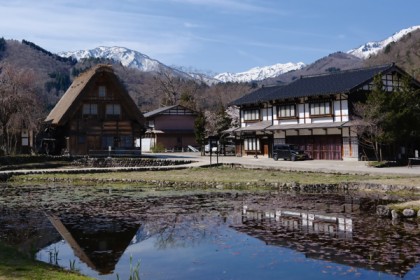Table of Contents
Describe a Beautiful City

Cue Card
You should say:
- Where the city is
- How you knew the city
- What buildings the city has
- And explain what it is famous for
Sample Answer 1
I would like to describe a beautiful city that I’ve had the pleasure of learning about. The city I’m referring to is Hangzhou, located in China. I became acquainted with Hangzhou through various sources, including travel documentaries, books, and articles that extolled its beauty and cultural richness.
Hangzhou is famous for its magnificent West Lake, which is considered the heart and soul of the city. This picturesque lake is surrounded by lush green hills, creating a stunning natural setting that appears as though it’s been plucked from the pages of a painting.
The waters of West Lake are crystal-clear and shimmer like precious jade, reflecting the changing seasons through the cherry blossoms of spring, the lotus blooms of summer, the chrysanthemums of autumn, and the plum blossoms of winter. Each season brings its unique charm, drawing countless visitors from all over the world to witness these captivating scenes.
In addition to its natural beauty, Hangzhou boasts a wealth of ancient architectural wonders. The city is home to the remarkable Lingyin Temple, founded in 326 AD, which holds a thousand years of religious history and is one of the birthplaces of Zen Buddhism.
The Six Harmonies Pagoda and the Baochu Pagoda, perched atop Precious Stone Hill, are stunning stone pagodas that showcase the brilliance of ancient Chinese architecture.
Hangzhou’s modernity is equally impressive. Qianjiang New City, the commercial and business hub, features towering skyscrapers, chic shopping centers, and international hotels.
This city is a hotbed of innovation, housing the headquarters of renowned technology and internet companies, which infuse Hangzhou with creativity and vitality.
The city is also celebrated for its gastronomic culture, offering globally acclaimed traditional delicacies such as Longjing tea, West Lake vinegar fish, and Dongpo pork.
Exploring Hangzhou’s narrow alleyways and bustling night markets provides a delightful culinary adventure, revealing the city’s unique charm through its street food offerings.
However, what truly makes Hangzhou a beautiful city is the harmonious fusion of its natural beauty, rich history, modernity, and cultural richness.
The West Lake’s serene waters, the ancient temples, the bustling modern skyline, and the enchanting music fountain all come together to create a city that is not only visually stunning but also emotionally captivating.
Hangzhou is a place where nature and culture coexist in perfect harmony, and this unique blend is what makes it undeniably beautiful.
Part 3
1. What are the differences between modern towns and modern cities?
Besides size, modern cities offer many more amenities to their populace.
There you’ll find first-class hospitals, large malls, sports stadiums, and many more, making the city a go-to place for leisure.
Modern cities also have more transportation options, such as railways, taxis, and double-decker buses, which you won’t find in modern towns.
However, what’s better about modern towns is the more laid-back atmosphere.
They have the conveniences of modern life but with less traffic and stress, which is why many are still happy to live there.
2. Why do some people like to visit historical sites?
You know, for many, it’s like taking a stroll down memory lane, but not their own –
it’s humanity’s collective past.
Visiting historical sites is almost akin to touching history.
It provides a tangible connection to tales of yore, legends, and lore.
Plus, there’s this innate curiosity in us, this urge to piece together how our forebears lived, the battles they fought, the cultures they forged.
It’s not just about bricks and stones; it’s about narratives, stories that shaped civilizations. And hey, for some, it’s also about those killer Insta shots!
3. How can people preserve historic cities and historic buildings?
There are a slew of methods, really.
First and foremost, there’s the bread and butter of restoration – repairing the wear and tear, making sure the place doesn’t crumble.
Using materials that match the original can be crucial.
Beyond that, local communities play a pivotal role.
They can champion the cause, rally for funds, even volunteer for maintenance.
Then, of course, there’s the legal angle – getting sites listed as heritage spots can grant them protection.
And education! When folks grasp the value of these treasures, they’re more likely to pitch in and protect.
4. Is is the government’s responsibility to preserve historic cities and historic buildings?
Yes, to a significant extent, it is the government’s responsibility to preserve historic cities and buildings.
I think the governments often have the resources, authority, and ability to enforce regulations that protect historical sites. They can provide funding for restoration projects, establish preservation policies, and designate historic districts.
However, it’s also crucial for governments to collaborate with private organizations and citizens to ensure comprehensive preservation efforts.
It’s a shared responsibility that involves both public and private sectors.
5. Does historic preservation contradict economic development?
Historic preservation does not necessarily contradict economic development. In fact, it can contribute to economic growth.
By preserving historic buildings and sites, cities can attract tourists, which in turn generates revenue for local businesses.
Additionally, preservation projects create jobs in construction and restoration sectors.
The charm and character of historic areas can also increase property values and promote sustainable development.
However, there may be cases where the cost of preservation
Some IELTS Speaking part 2 cue-cards you may like :
- (2024) Describe a Person Who Always Has Interesting Ideas Or Opinions
- (2024) Describe a Place In Your Country That You Think Is Interesting
- (2024) Describe a Difficult Task That you Completed At Work/Study That You Felt Proud Of
- (2024) Describe a Time That Something Changed Your Life In Good Ways
- (2024) Describe a Good Advertisement That You Think Is Useful
- (2024) Describe a Bad Service You Received In a Restaurant/Shop
- (2024) Describe a Rule That Is Important In Your School Or At Work
- (2024) Describe a Drawing/Painting That You Like
Credits
Image : Photo by あま あわれ on Unsplash


